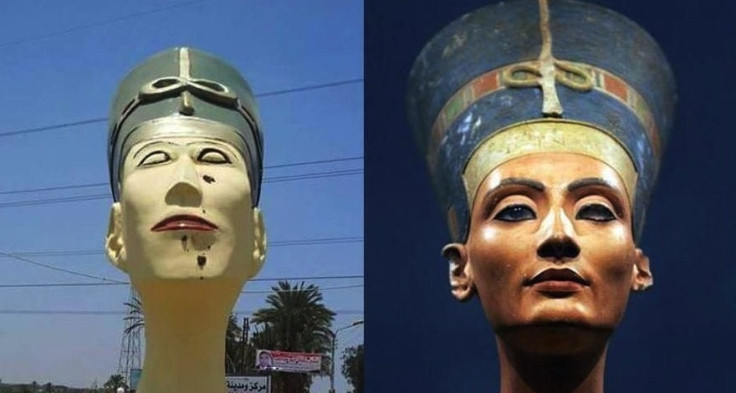Egyptians compare 'ugly' new Nefertiti statue to Frankenstein's monster

A large bust of Queen Nerfertiti was hastily taken down after angry locals complained it looked nothing like the famed beauty of pharaonic Egypt.
Officials in Samalout removed the bust which was placed at the city's entrance on the Egypt-Aswan highway, according to ahram online.
Photos of the bust created a Twitter storm, with hundreds of Egyptians mocking the modern bust, comparing it unfavourably with its original inspiration, believed to date back over 3,300 years.
Outraged Egyptians compared the modern statue of the ancient queen to an early Hollywood film of Frankenstein, played by Boris Karloff.
"This is an insult to Nefertiti and to every Egyptian," tweeted one Egyptian woman. Another wrote: "It should be named 'ugly tasteless artless statue'... not Nefertiti."
Many Egyptians unleashed their anger on the sculptors: "If you don't know how to make statues don't go and do something so unfair to the beautiful Nefertiti," tweeted one harsh art critic.
"Not only are you distorting the present but also the past... I ask that the original bust not be returned from Germany, at least there she's got her dignity," another wrote.
"This is an insult to Nefertiti & to every Egyptian," ..I agree. This statue is horrendous. #Nefertiti http://t.co/K9Kt03OClE
— Michelle Kayo (@MimiKayo) July 7, 2015
@mazenalsarhan, tweeted: "I believe in the Pharaonic curse, and I hope it casts its spells on all of those who were involved and agreed on distorting the Beauty of all beauties #nefertiti."
Another, @BahaaBme, described the statue as "Nefertiti after her diagnosis with schistosomiasis and hepatitis C that she caught from swimming in infected lakes."
@N0urhan_Atef added: "Had she been alive, she would've died of heartbreak."
Egypt has often requested Germany to return the original Nefertiti bust, which is in Berlin's Neuse Museum, but has always been refused.
The Great Royal Wife's full name is Neferneferuaten Nefertiti, meaning: "Beautiful are the Beauties of Aten, the Beautiful one has come."
The head of Samalout city, Gamal Kanaway said that the bust would be replaced with a less controversial statue - the dove of peace.
© Copyright IBTimes 2024. All rights reserved.






